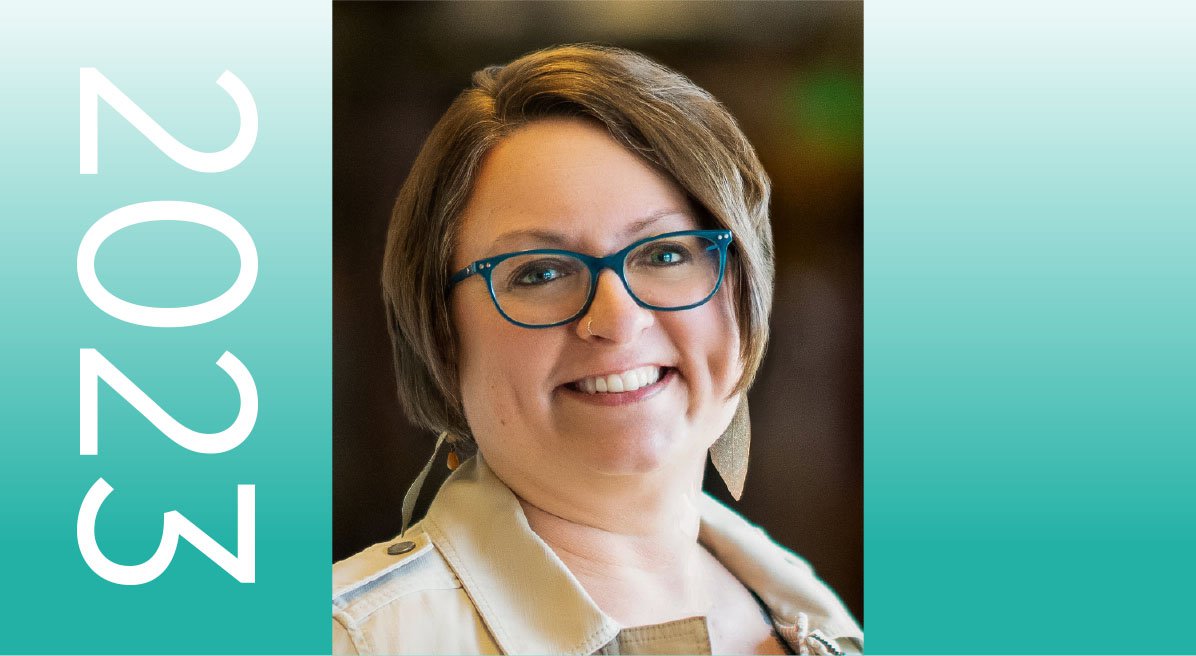


Washington State Elementary Principal of the Year:
Dr. Dana Stiner
Pine Tree Elementary students thrive in the new Falcon Nest
Evaluation Criteria: Creating a Culture; Ensuring School Safety, Planning with Data, Aligning Curriculum, Improving Instruction, Managing Resources, Engaging Families & Communities, Closing the Gap
It all began with a data point.
Case in point: While combing through the data for her school, she noticed that her Native American students were under-performing.
Diving deeper into that data point with her MTSS team, they hypothesized that this small group of students felt a lack of belonging at her school. So she hired a Native American artist to work with these students to help paint a Native American-inspired school mural in the gym.
Dr. Christine Avery, Kent executive director of learning improvement, says it is Stiner’s willingness to embrace her school’s differences and leverage the data to improve instruction has made the difference for students at Pine Tree.
“Dr. Stiner and her staff close the achievement gap because they know how to use data, have strong systems for progress monitoring, use PBIS and MTSS to tier supports, and LOVE their students,” said Avery. “Pine Tree Elementary has 38 different languages and is a Title I school, however these are not viewed as barriers to learning; they are assets.”
It is also one of many reasons why Stiner was selected as the 2023 Elementary Principal of the Year.
Pine Tree Elementary is calm, joyful, focused on learning, and I wish I could replicate this principal across all schools to replicate the outcomes she achieves in teaching and learning.
Creating a ‘Pine Tree Way’
Pine Tree is a diverse, high poverty school with a high percentage of immigrant families; 38 languages are spoken at the school. It is a highly mobile school community.
When Stiner arrived at the school, she was the fifth principal in five years. “The staff was exhausted,” Stiner recalls. “The school did not have systems and structures in place to support academics or social emotional/behavior. Teams did not collaborate; data was not shared, and no one – staff or students – were held accountable. This meant that learning occurred in some classrooms sometimes, but we did not have a ‘Pine Tree’ way of doing things. This is where I began our work,” she said.
As it turns out, it was a lot of work.
Stiner began by creating common planning time for all grades, so collaboration was at the center of their work. She staggered core instruction so that instructional coaches could visit all classrooms and content areas. Then she scheduled intervention blocks for every grade level, and ensured that students receiving special education services did not get pulled from core instruction.
By making these shifts, student growth on SBA ELA grew from 42 points for the 2016-17 school year to 52 in the 2017-18 school year. Their math growth on SBA grew from 43 points for the 2016-17 school year to 62 in the 2017-18 school year.
As a leadership team, she collaborated with staff to create detailed action plans for improving core instruction. They began meeting as PLCs, sharing data openly and often. In reading, they concentrated specifically on teaching phonics and in math, focused on spiral review and vocabulary.
For the 2017-18 school year, the school was identified as a targeted school of focus in three subgroups: special education, black students, and students identified as ELL. By the end of the 2018-19 school year, they had moved over the ID threshold for ELL and black students; gaps were closing.
Stiner was also looking outside of the school for opportunities to increase achievement.
Through a collaborative partnership, the school partnered with Steamboat Studios to host a free STEM program for students. Families could pick up a free science kit each week, which required them to watch a prerecorded video to complete the project together with their students, and then meet as an online community to share their creation.
It was such a huge success, they’ve continued the partnership to present day. Pine Tree’s SBA 5th grade science data went from 39% passing in 2018-19 to 64% in 21-22 – in spite of COVID.
A Model School
Prior to Dr. Stiner coming to Pine Tree Elementary, there was high turn-over among staff, low student growth, lack of trust among the parent community, and large disproportionality in discipline data.
Now, Avery says, Pine Tree is a model school where students are thriving both socially and academically. Dr. Stiner also mentors other school administrators, sharing what she has learned through her work at the school.
When you walk through the hallways and classrooms at Pine Tree you can see the school’s mission, vision and values come alive, said Avery.
A prime example is the school’s “Falcon Nest.” Students were struggling with making friends, being kind to others and keeping their hands and feet to themselves – skills that must be explicitly taught. Stiner and her team created the Falcon Nest as an alternative recess to support this specific social skill instruction. Students no longer lose recess but participate in structured games, arts and crafts. Stop into the Nest and watch students play air hockey or ping pong. Many students choose to create art, and some choose to play with action figures.
The Nest has become a welcoming place, with something for everyone, building on that sense of community and belonging Stiner sought to create.
“Dr. Stiner makes Pine Tree Elementary special because she is hands-on and focused on making school joyful and positively impactful on the academic and social-emotional wellness of her students and staff,” wrote Avery in her nomination of Stiner.
“Pine Tree Elementary is calm, joyful, focused on learning, and I wish I could replicate this principal across all schools to replicate the outcomes she achieves in teaching and learning.”
“Learning isn't always easy at Pine Tree,” said Stiner, “but we work hard and have lots of fun.”
Watch Dana’s video on YouTube.




